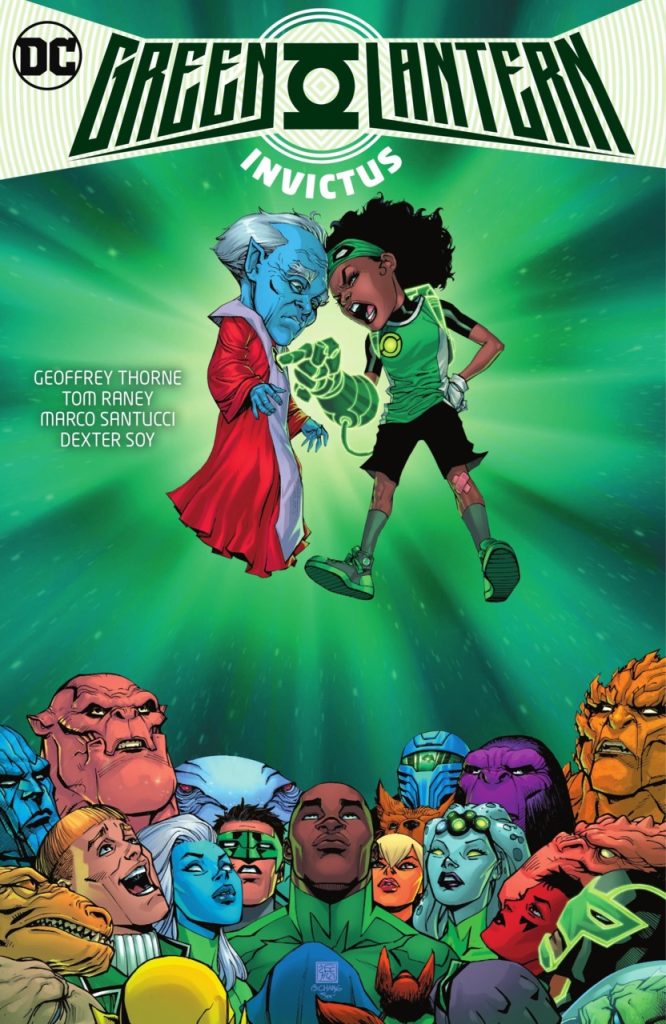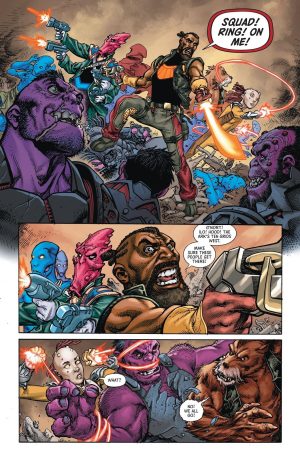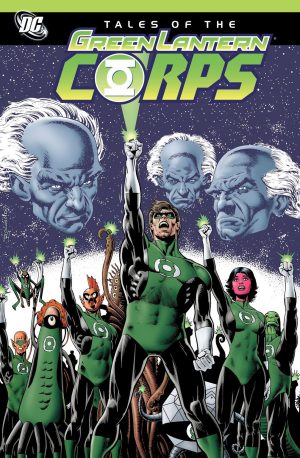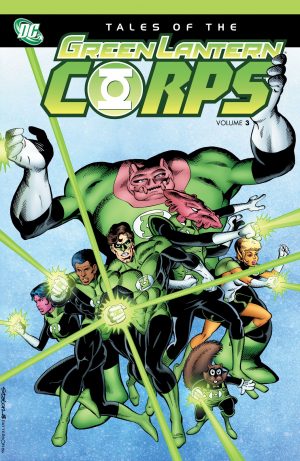Review by Frank Plowright
Invictus relaunches the Green Lanterns after Grant Morrison’s focus on Hal Jordan as a galactic policeman, and does so via a two chapter glimpse into the future. It’s a desperate situation in which John Stewart and a few others are facing a Khund invasion without their power rings.
The presumption is that the prelude is what happens at some stage, and the following four chapters begin the events leading up to it. They start with a meeting of planetary representatives to consider the Green Lanterns’ place and whether or not Oa, the planet from which they operate, should be accepted into the recently formed United Planets. There are vested interests who’d prefer they remain outsiders.
Geoffrey Thorne includes a few interesting ideas, such as what are in effect magical rings (despite the science always being stressed) facing off against agents of magic, and he offers an explanation for so many Green Lanterns being human. However, so much of Invictus just seems another go on the merry-go-round. We have the Guardians of the Universe repeating past mistakes and seeding trouble by acting high-handedly, and John Stewart having to fall back on military expertise. That’s because another of Thorne’s ideas is to ensure there are no Green Lanterns, which may be different, but the validity of a Green Lantern story featuring ordinary humans (and aliens) rather defeats the point of the title.
Of course, anything would be forgivable if Invictus were actually interesting, but it’s not. The prelude sequence is of a type any long-term reader has seen dozens of times, the pre-disaster discussions are dull, and then we hit the no more Green Lanterns button. To make things even more confusing for an English language audience, one character speaks largely in Spanish. The only saving grace is the introduction of Sojourner Mullein, so memorable in Far Sector, and she eventually proves the most interesting character as it falls to her to pull things back from the crisis point. However, if the prelude is where the story’s heading, don’t hold out much hope for thrills along the way in Horatius.
Less than sparkling stories can be saved by the art, but that’s not happening here either. Tom Raney over the opening chapters has moved into cartooning, but has continual problems with human anatomy, which is not great when he draws around half the book (sample art). On so many pages John Stewart is contorted, or pinched, or squat, or flat faced, or just not put together correctly. Dexter Soy is a little more expansive, but even he has panels where John’s neck is as large as his head, although both Soy and Marco Santucci are far better at providing the wonder of space and the possibilities of alien races.
It’s not enough, though. All in all, rather a car crash.




